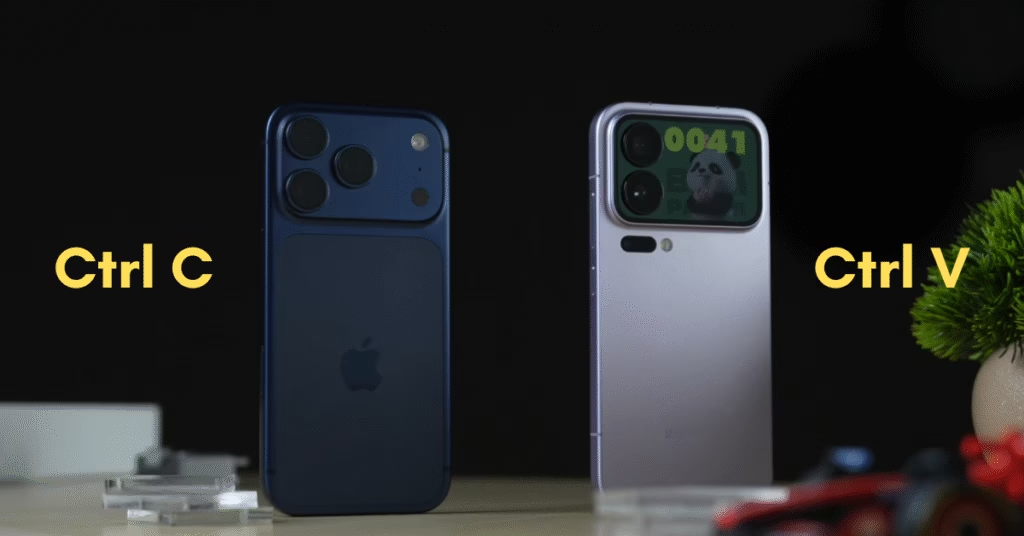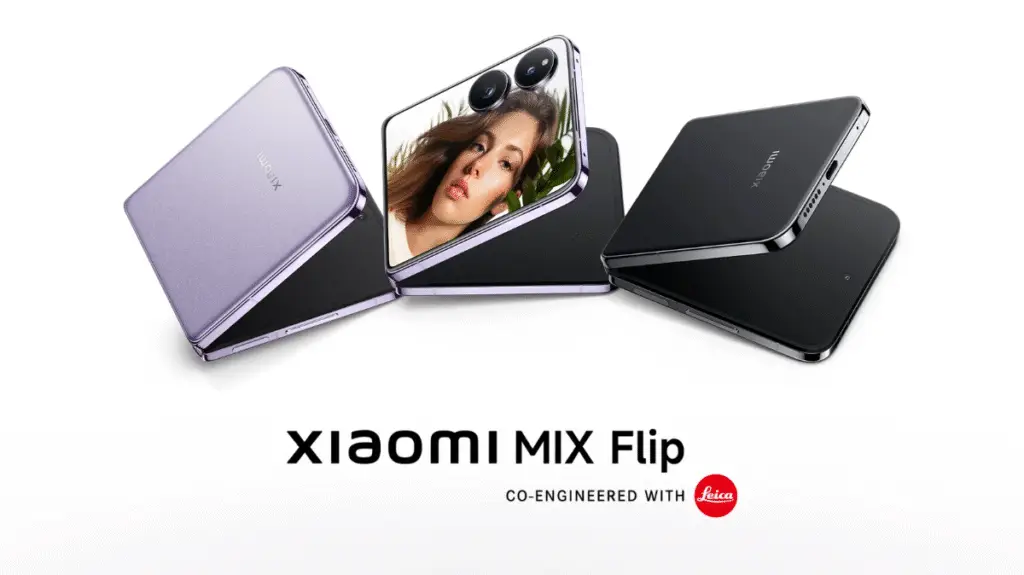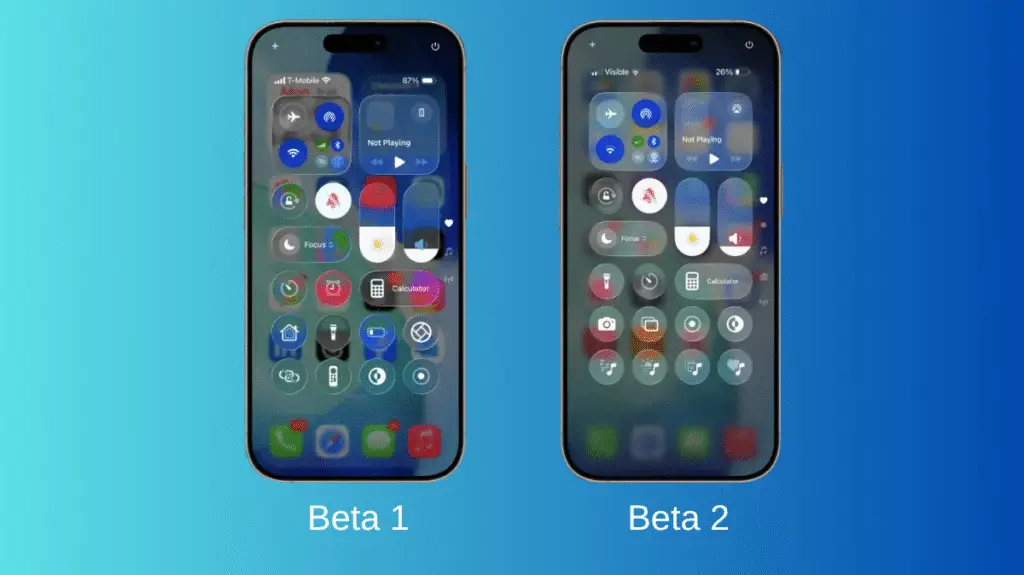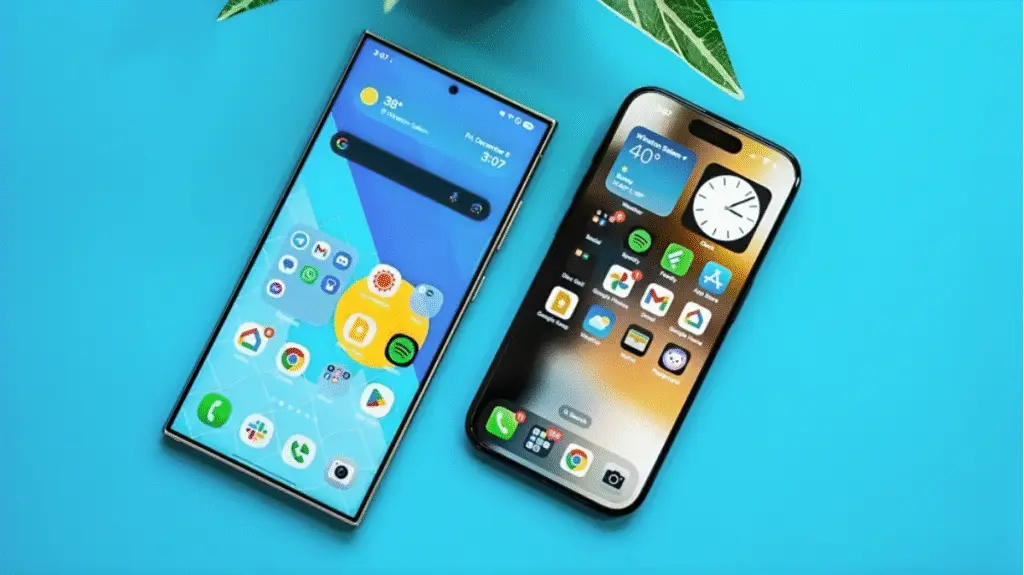
Every year, smartphone companies try to outshine each other, and 2025 is no different. This time, I decided to use both the iPhone 17 Pro Max and the Xiaomi 17 Pro Max side by side in my daily routine to see which one truly stands out. On paper, both phones look almost identical: the same camera island, similar body shape, even that pill-shaped dynamic island (or as Xiaomi calls it, Hyper Island). But once you start using them, small details begin to tell a bigger story.
Design and Build Feel
Let’s start with the design. When I first picked up the Xiaomi 17 Pro Max, I had to double-check the logo to make sure it wasn’t an iPhone. It’s that similar. However, the materials used feel slightly different. The Xiaomi uses Dragon Crystal Glass 3, which is tougher than any glass I’ve ever seen on a phone. It’s not just the front; even the back has the same strong protection. The iPhone still feels a bit more refined in the hand; that seamless aluminum-titanium frame, tight finishing, and balanced weight give it that premium Apple feel.
But here’s the twist. Xiaomi’s version is more practical. It has IP68 water resistance up to six meters, while most flagships, including the iPhone, stop around two to three meters. That’s a big deal if you’re clumsy around water. Both phones look beautiful, but Xiaomi’s attention to durability really surprised me.
Display and Visual Experience
Now, screens are what we interact with the most, so they matter a lot. The iPhone 17 Pro Max display is classic Apple crisp, bright, and color-accurate. Whether I was editing photos or watching a movie, the colors stayed consistent and natural. But Xiaomi did something clever: it added a rear 2.9-inch AMOLED display with 120Hz refresh rate. That small screen might sound gimmicky, but it’s actually fun and useful. I could check notifications, see the time, or even take selfies using the rear camera without flipping the phone.
In daily life, I found myself using that rear display quite often. It’s like having a mini smartwatch built into your phone. Still, for main display performance, the iPhone wins in sunlight visibility and smooth touch response. Apple’s color calibration and adaptive refresh rate are just hard to beat.
Performance in Daily Use
Both phones are powerhouses. The iPhone 17 Pro Max runs on the A19 Pro chip, while the Xiaomi 17 Pro Max is powered by the Snapdragon 8 Gen 5. On paper, they’re neck and neck, but I tested them in real-world situations, opening heavy apps, editing short videos, gaming, and multitasking.
The iPhone handles long usage without heating much. Even after half an hour of gaming, the back only got mildly warm. The Xiaomi, though, showed some heat buildup when I pushed it with 3D games or benchmarks. Interestingly, some benchmark apps wouldn’t even run on the Chinese unit, possibly due to overheating protection. Still, during everyday tasks like messaging, YouTube, or camera use, both phones felt equally fast. Animations on Xiaomi’s HyperOS 3 are actually smoother in some places than iOS. That’s something I didn’t expect.
Camera Experience
Now let’s talk about the cameras, because that’s where everyone’s attention goes. The iPhone 17 Pro Max continues Apple’s tradition of balanced photography. Photos look true to life, skin tones are accurate, and video stabilization is still best in class. But Xiaomi stepped up its game this year. It packs a triple 50MP Leica system with some insane features. The main sensor, the Light Fusion 950L, captures up to 16.5 stops of dynamic range. That’s higher than the iPhone’s 14 stops. What that means in real life is you can brighten or darken photos without losing detail perfect for editing later.
I also tried the 120x zoom on the Xiaomi. While it’s mostly AI-enhanced, the results were surprisingly usable. The iPhone’s zoom maxes out lower but produces more natural results. Portrait shots are a tie Xiaomi gives that punchy, contrast-rich Leica look, while Apple goes for realistic tones. It depends on what you like. However, Xiaomi’s tele-macro feature blew me away. You can take close-up macro photos using the telephoto lens, and the detail is just wild.
Battery and Charging
When it comes to battery, Xiaomi dominates. The 7500mAh silicon-carbon battery inside feels like a small power bank. I easily got more than a day and a half on regular use. The 100W wired charging and 50W wireless charging are incredibly fast 0 to 100% in about 25 minutes. On top of that, it offers 22.5W reverse wireless charging, which means you can charge another phone wirelessly at real speed, not the slow trickle most phones offer.
Apple, on the other hand, sticks to its moderate pace. The iPhone charges slower, and battery life, while solid, doesn’t match Xiaomi’s massive capacity. But I noticed one thing: iPhone’s battery health seems to remain more stable over time. Xiaomi’s ultra-fast charging might reduce longevity in the long run, but that’s just something we’ll know after months of use.
Software and User Experience
Here’s where opinions get divided. iOS 26 feels familiar, polished, and stable. Everything just works. Notifications are consistent, app optimization is excellent, and privacy features are top-notch. But it’s also the same old interface Apple users are used to not much flexibility or customization.
Xiaomi’s HyperOS 3 feels like Apple’s UI on steroids. The animations are lively, the icons have that liquid glass look, and the Hyper Island is basically a copy of Apple’s dynamic island, same shape, same functions, just a different name. Still, Xiaomi has added fun touches like customizable themes, app icons, and transitions. In some ways, it’s more interactive than iOS. For instance, the way settings and notifications expand and fold back feels satisfying. But it’s not as bug-free as Apple’s software. I faced a couple of minor glitches during setup, though updates might fix that later.
Value for Money
Now let’s address the elephant in the room price. In China, the Xiaomi 17 Pro Max sells for around 62,000 PKR equivalent, and even when it launches in India or Pakistan, it might stay under 80,000 PKR. The iPhone 17 Pro Max, meanwhile, costs almost 1.35 lakh. That’s a massive gap.
Does the iPhone justify that extra cost? For brand reputation, seamless ecosystem, and software reliability, yes. But for features, performance, and innovation, Xiaomi gives you more for less. You get faster charging, a bigger battery, a tougher build, and some wild camera tech all at nearly half the price. For someone who wants premium experience without breaking the bank, Xiaomi is tempting.
Why They Look So Similar
A lot of people keep asking why Xiaomi copied Apple so directly. The truth is, it’s part marketing, part manufacturing strategy. Apple sets a design trend, and the entire supply chain adapts to it. When Xiaomi follows the same design, production becomes cheaper and faster. Plus, comparisons like this one generate free publicity articles, YouTube videos, discussions all of which help them sell more units. It’s not laziness; it’s smart business.
On the other side, Apple also borrows ideas from Android. Always-on display, widgets, circle-to-search all came from Android first. But Apple implements them later, in its own refined way, and markets them as revolutionary. So copying isn’t one-sided. It’s the cycle of innovation that keeps both sides improving.
Final Thoughts
After using both phones for weeks, I realized it’s less about who copied whom and more about what fits your lifestyle. The iPhone 17 Pro Max is for those who love a smooth, dependable experience, want long-term support, and don’t mind paying extra for the ecosystem. The Xiaomi 17 Pro Max, on the other hand, is for people who crave value, cutting-edge specs, and the excitement of trying something bold.
If I had to sum it up: Apple feels like a refined, well-dressed professional, while Xiaomi feels like a creative rebel, loud, experimental, but incredibly capable. Both are brilliant in their own way. Competition like this only pushes the smartphone world forward, and as users, we’re the real winners.
See Also Pixel 10 vs Galaxy S25: Which One Deserves Your Money in 2025?
FAQs (iphone 17 pro max vs xiaomi 17 pro max)
Which phone has better camera performance?
Both phones offer excellent cameras, but in different ways. The iPhone produces more natural photos and reliable video quality, while the Xiaomi gives you sharper details, higher dynamic range, and more creative modes like the 120x zoom and tele-macro. If you prefer true-to-life shots, go for the iPhone; if you like vivid and experimental photography, Xiaomi wins.
Does the Xiaomi 17 Pro Max overheat during heavy use?
During normal use like messaging, browsing, and photography, it stays cool. However, when running long gaming sessions or benchmarks, it can heat up a bit, likely due to the Snapdragon 8 Gen 5 chip and compact body. It’s not alarming but noticeable.
Which one has a longer battery life?
The Xiaomi clearly lasts longer. Its 7500mAh silicon-carbon battery gives around one and a half days of heavy use. The iPhone 17 Pro Max battery is smaller but more efficient, lasting about a day. Still, Xiaomi’s faster charging makes it more convenient.
Is the rear display on Xiaomi actually useful?
Surprisingly, yes. It acts like a mini smartwatch you can check notifications, use it for selfies, or quickly glance at the time. It’s not a must-have feature but adds a fun, practical touch that the iPhone doesn’t offer.
Why does Xiaomi look so much like the iPhone?
Xiaomi intentionally designed its 17 Pro Max to look like Apple’s phone. It’s a strategy called comparative marketing. When two products look similar, people naturally compare them, giving Xiaomi free publicity. Plus, it helps reduce manufacturing costs since suppliers are already optimized for Apple’s design.
Which one feels more premium in hand?
The iPhone feels more polished with its balanced weight and titanium edges. Xiaomi feels slightly bulkier but very sturdy thanks to Dragon Crystal Glass 3. It’s more about what you prefer: luxury feel or toughness.
Does the iPhone still have better software?
Yes, iOS 26 is still smoother and more reliable overall. However, Xiaomi’s HyperOS 3 looks beautiful and offers more customization. If stability and simplicity matter to you, go with Apple. If you love experimenting and personalizing your phone, Xiaomi feels more exciting.
Which one gives more value for money?
Without a doubt, Xiaomi gives you more features for less money. But if you’re already invested in Apple’s ecosystem or want consistent software support, the iPhone is a safer long-term choice.



